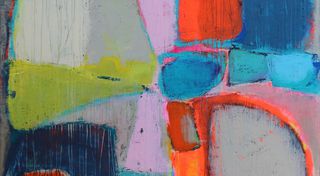

Biography
Wenda Gu is a contemporary Chinese artist, born in 1955 in Shanghai. He is widely known for his bold fusion of traditional Chinese calligraphy with experimental installations and organic materials. He studied at the Shanghai School of Arts and Crafts and the Zhejiang Academy of Fine Arts in Hangzhou, where he was mentored by ink painting master Lu Yanshao.
In the 1980s, Gu began creating pseudo-ideograms—invented characters that resemble Chinese but are meaningless—challenging the structures of written communication. His provocative works led to censorship, such as the closure of his 1986 exhibition in Xi'an. In 1987, Gu moved to the United States to expand his international reach.
During the 1990s, he launched ambitious projects using human materials, particularly human hair, to symbolize unity and collective identity. His renowned “United Nations" project, initiated in 1993, features monumental installations of national flags made from hair collected from over 50 countries, exploring cultural diversity, memory, and globalization.
Notable among his projects is "Ink Alchemy" (1999–2001), a collaboration with Shanghai's traditional ink maker Cao Sugong, in which he created ink from human hair. This work investigates the boundaries between Chinese tradition and contemporary innovation.
Gu has exhibited at major institutions such as the San Francisco Museum of Modern Art, PS1 Contemporary Art Center in New York, the Lyon Biennale (2000), and the Venice Biennale. His works are part of numerous international collections.
Wenda Gu lives and works between New York and China. His art offers a unique reflection on identity, language, and cross-cultural communication.
Nationality




